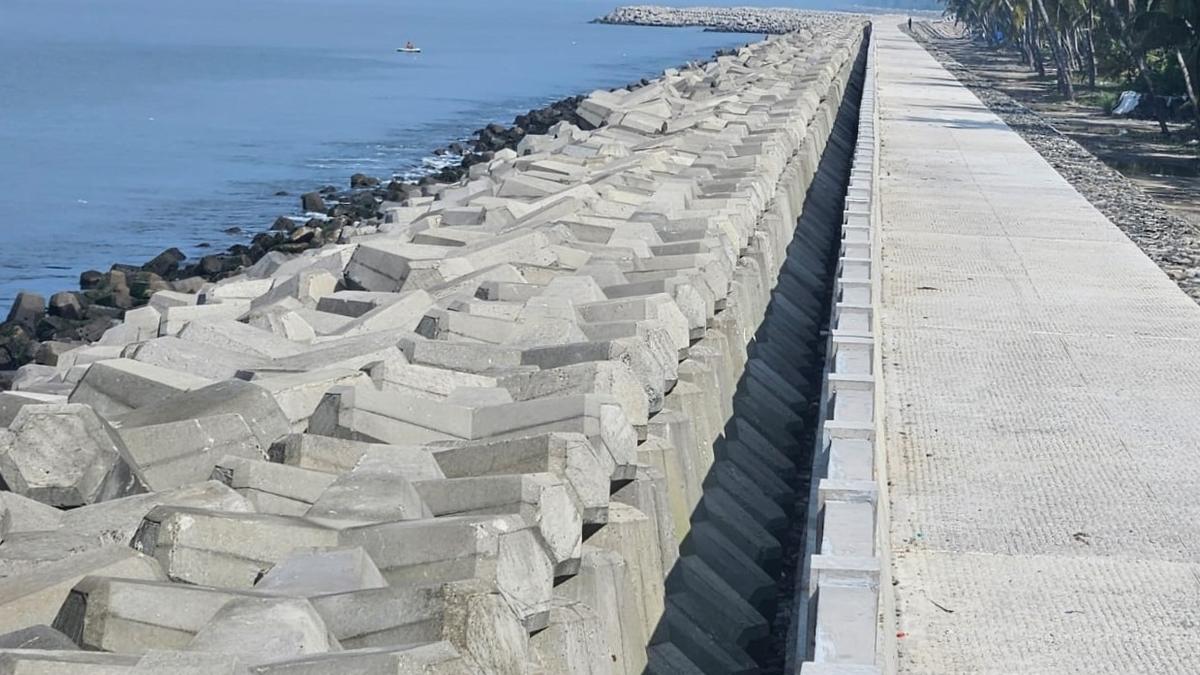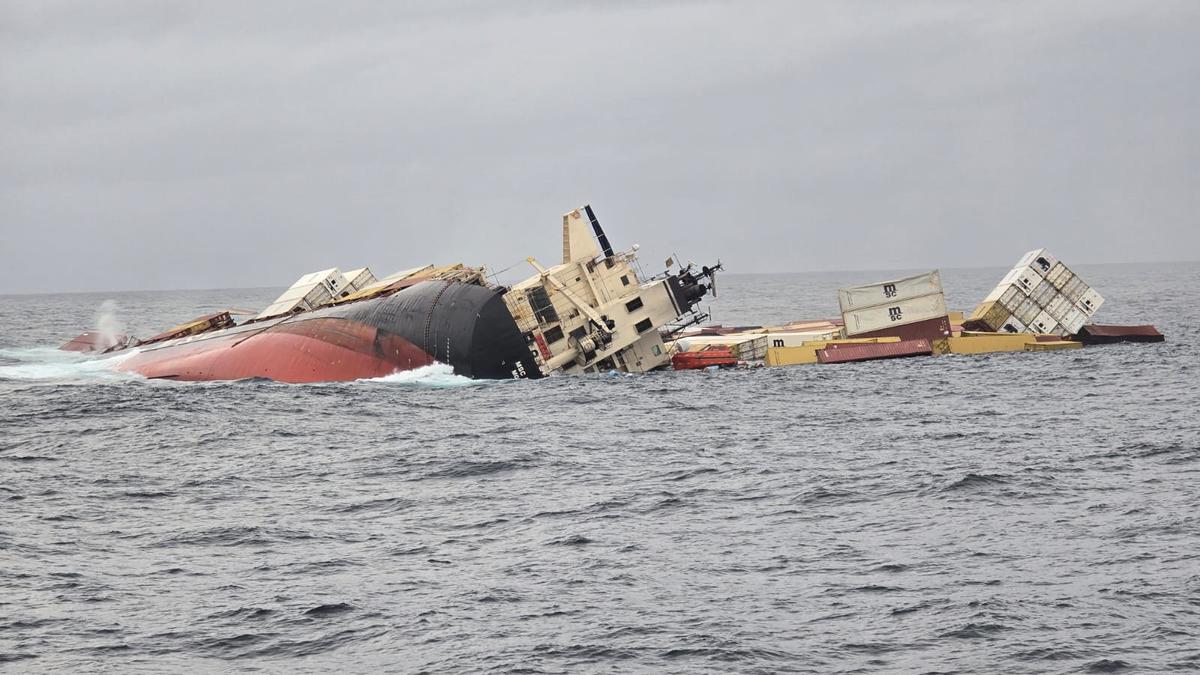The tetrapod seawall in Chellanam that was constructed in the first phase.
| Photo Credit: H. VIBHU
Three months after the Kerala government approved the ₹306-crore second phase plan for constructing a tetrapod seawall in Chellanam panchayat, which remains highly vulnerable to coastal erosion, there has been little progress.
At the market rates calculated at the time, the government was expected to spend about ₹100 crore per kilometre. With local body elections expected to be notified soon, followed by the enforcement of the model code of conduct, the affected population in the coastal panchayat, who have been protesting under the banner of the Chellanam-Kochi Janakeeya Vedhi for a permanent solution to sea incursion over the past six years, are apprehensive that the project may not commence soon.

An executive committee meeting of the organisation held recently decided to mark the protest entering the seventh year by holding a day-long dharna at Thoppumpady on October 28. Plans for further protests are also under way.
“There has been no movement on the project since it was announced on July 2. Securing renewed administrative, technical, and financial sanctions before the notification of local body polls is crucial for the work to begin without further delay,” said V.T. Sebastian, general convenor of Chellanam-Kochi Janakeeya Vedhi.
The first phase of the project, covering a 7.3-km stretch from Chellanam to Puthenthode, was completed at a cost of ₹347 crore in 2023. Although the initial plan included the remaining 3.60-km stretch from Puthenthode to Cheriyakkadavu, the project executor – Uralungal Labour Contract Co-operative Society Ltd – was only able to complete up to Puthenthode due to a revised estimate.
A high-level meeting had decided that the second phase would also be executed as a Kerala Infrastructure Investment Fund Board (KIIFB) project.
At the time of the project’s announcement, it was stated that a detailed project report (DPR) had already been prepared and only the administrative sanction needed renewal.
Chellanam is the worst affected
Chellanam is the worst affected among the 10 hotspots facing sea erosion in Kerala, as identified by the Irrigation department.
The Chellanam-Kochi Janakeeya Vedhi has consistently demanded that the government revisit the partial implementation approach and resolve the issue by extending the tetrapod seawall beyond Cheriyakkadavu up to Beach Road, covering all affected areas in Chellanam panchayat.
The organisation noted that the piecemeal implementation of the shore conservation project in Chellanam is unscientific and inadequate to tackle the worsening sea erosion.
Published – October 04, 2025 11:12 am IST





